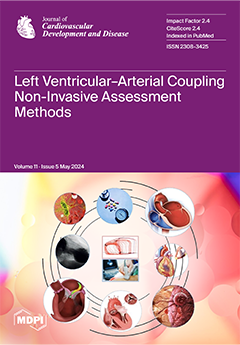Background: Infective endocarditis (IE) is marked by a heightened risk of embolic events (EEs), uncontrolled infection, or heart failure (HF). Methods: Patients with IE and surgical indication were enrolled from October 2015 to December 2018. The primary endpoint consisted of a composite of major adverse events (MAEs) including all-cause death, hospitalizations, and IE relapses. The secondary endpoint was all-cause death. Results: A total of 102 patients (66 ± 14 years) were enrolled: 50% with IE on prosthesis, 33% with IE-associated heart failure (IE-aHF), and 38.2% with EEs. IE-aHF and EEs were independently associated with MAEs (HR 1.9, 95% CI 1.1–3.4,
p = 0.03 and HR 2.1, 95% CI 1.2–3.6,
p = 0.01, respectively) and Kaplan–Meier survival curves confirmed a strong difference in MAE-free survival of patients with EEs and IE-aHF (
p < 0.01 for both). IE-aHF (HR 4.3, 95% CI 1.4–13,
p < 0.01), CRP at admission (HR 5.6, 95% CI 1.4–22.2,
p = 0.01), LVEF (HR 0.9, 95% CI 0.9–1,
p < 0.05), abscess (HR 3.5, 95% CI 1.2–10.6,
p < 0.05), and prosthetic detachment (HR 4.6, 95% CI 1.5–14.1,
p < 0.01) were independently associated with the all-cause death endpoint. Conclusions: IE-aHF and EEs were independently associated with MAEs. IE-aHF was also independently associated with the secondary endpoint.
Full article






